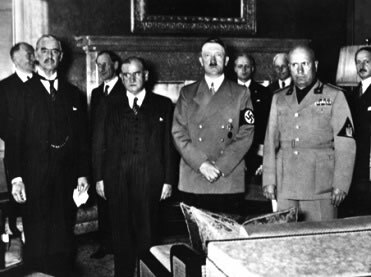The War of the Two Roses is a conflict of great importance for understanding the process of formation of the English national monarchy. This war arose with the rivalry between two noble families: the York and the Lancasters. These two families came from the Plantagenet dynasty, which held the British throne for a long period. However, the crisis between these two families was due to the death of King Edward III and the succession to the throne at the hands of Henry VI.
The York supported the arrival of Henry VI to the throne, even though he had no ability to deal with the political and military issues of the period. At that time, England was experiencing the last and decisive conflicts of the Hundred Years War and was going through serious difficulties due to successive French victories. Even with the British military failure, Richard of York supported the permanence of Henry VI on the throne, hoping that he would die in a short time.
However, the inept King Henry VI managed to conceive an heir, which could jeopardize Richard of York's plans. In view of the unfavorable situation, Ricardo joined a group of barons who demanded the removal of the Lancasters from the cadres of the royal administration. Insulted by the ambitious nobleman's demand, Henry VI organized an army against the forces of Richard of York. In 1455, at the Battle of Saint Albans, the armies of York managed to defeat the royal troops.
Soon after, Ludford Bridge, of the Lancasters, supported the king and managed to beat the York, who took refuge in Ireland. In the year 1460 Richard of York regained his forces and managed once again to overthrow Lancaster troops during the fighting in Northampton. At that time Richard had ample conditions to finally reach the British throne, but at the Battle of Wakefield he was brutally murdered by his enemies.
However, Richard's plans were continued by the Baron of Wareick, who formed armies for the rise of Richard's son Edward York to the throne. This time pro-York troops managed to take the city of London and proclaim Edward IV as the new king of England. At the Battle of Towton the Lancaster armies were completely destroyed, which forced King Henry VI to take refuge in Scottish lands.
The York's significant victory did not signal an end to the civil war that broke out in the English nation. During the reign of York Edward IV, several disagreements with the nobles who supported him politically weakened his permanence on the throne. In 1469, the Baron of Wareick and the Duke of Clarence broke ties with the king and decided to fight in favor of the Lancasters. Thanks to this change of scenery, King Henry VI was able to reassume the British throne.
However, the alliance between the nobility of that time could be reconfigured at the slightest sign of disagreement. In the year 1471, the deposed Edward regained the support of the Duke of Clarence and printed an expressive victory at the Battle of Barnet, where Edward IV was again sworn in as King of England. Alert to a possible countercoup, Edward murdered several members of the Lancaster family and ordered the execution of Henry VI and his future heir.
This episode ended up interrupting the conflict between the York and the Lancasters. The conflict only reignited when Edward IV died in 1483. The throne ended up in the hands of Richard III, younger uncle of Edward IV, who took over the government after the mysterious disappearance of the former king's two sons from the Tower of London premises. During this period the Lancasters financed a new battle in favor of a new claimant to the throne: Henry Tudor.
In the year 1485, Henry Tudor left Britain and invaded England with an armed contingent of more than five thousand soldiers. In contrast, the York had a mighty army that counted twice as many warriors. Amazingly, Henry Tudor's troops won the Battle of Bosworth Field, where Richard III was killed. With that, Henry Tudor was crowned Henry VII, the new king of England.
To avoid another possible confrontation between the red rose (the Lancaster family) and the white rose (the York family), Henry VII married Elizabeth of York. With this, the Tudor dynasty was represented with the overlapping of two roses, which indicated the end of the confrontation.
Do not stop now... There's more after the advertising ;)
By Rainer Sousa
Graduated in History
Brazil School Team
Middle Ages - wars - Brazil School
Would you like to reference this text in a school or academic work? Look:
SOUSA, Rainer Gonçalves. "War of the Two Roses"; Brazil School. Available in: https://brasilescola.uol.com.br/guerras/guerra-das-rosas.htm. Accessed on June 28, 2021.

